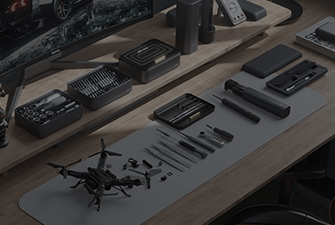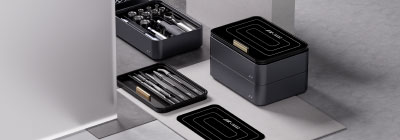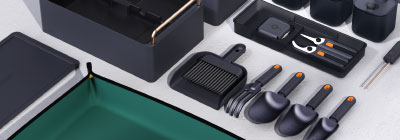packaging-smart professional tool sets for DIY enthusiasts for professional workshops

A properly stocked toolbox forms a craftsman's chief possession for primary tasks like measuring planks and fastening screws accurately. This compendium presents expertise to select suitable gear and apply it effectively.
- Start your setup by compiling vital hand tools—hammer, screwdrivers, wrenches, pliers, saws and measuring tapes.
- Master the use and intended functions of each tool for distinct tasks.
- Polish your approach by working on hands-on tasks and boosting complexity over time.
Bear in mind that time spent learning hand tools enhances your skillset. With thorough expertise, tools will enhance your capacity to deliver precise, demanding project outcomes.
Power Up Your Projects: Exploring Power Tools
Keen to revolutionize tasks? Dive into strong tools that marry precision and operational speed. These core power tools can radically improve results for both pros and amateurs. From performance drills to precision saws, power tools give multiple capabilities to support construction work.
- Leverage cordless impact drivers to streamline fastening and demolition jobs.
- Develop expertise with reciprocating saws to make fast precise cuts in multiple substrates.
- Boost woodcraft quality with high-power planers and jointers for accurate finishing.
Use power tools to streamline timelines and deliver remarkable project results.
Precision Workflows Simplified
In accuracy-focused tasks, the correct measuring aids affect outcomes greatly. From standard scales to refined calipers, measuring instruments assist in producing precise, reliable results. Whether adept artisan or fresh hobbyist, measurement mastery opens additional creative opportunities.
- Survey a diverse selection of measuring tools for every project requirement.
- Familiarize yourself with applications and advantages of each measuring device.
- Enhance skillset in precise measuring and application practices.
Kits for Every Job
If you're an experienced worker or a weekend DIYer, a suitable toolkit is indispensable. For diverse tasks including assembly and fastening, the perfect toolset supports accuracy and safety. Match toolset choice to the tasks you undertake most frequently.
Decide between a full-range set and a dedicated specialized toolkit? Once you've determined your requirements, explore different brands and models to compare features, quality, and price. Review customer testimonials and ratings to better judge a product before purchase.
Using careful research and forethought you can select a toolset to tackle tasks with assurance.
Hand Tool Maintenance: Keeping Your Gear in Top Shape
Proper maintenance of hand tools is vital for consistent workmanship. Neglected tools often develop dull edges, faults and disappointing performance. Steady maintenance preserves tool quality and lengthens productive lifespan. Begin with wiping and cleaning tools post-use to clear grime and particles. House tools in dry conditions to prevent rust formation and corrosion.
- Hone blades routinely with a sharpening stone or bench file.
- Treat moving parts with suitable oil to decrease wear and friction.
- Examine grips for cracks and worn spots and replace if required.

Adhering to these maintenance practices will lengthen the lifespan of tools and enhance your workflow.
Must-Have Hand Tools for Home Workshops
A well-equipped home workshop is a haven for DIY enthusiasts and hobbyists alike. Special tools are handy yet basic hand tools form the backbone of project work. Vital tools include a solid hammer, an adaptable wrench and a trustworthy tape measure for accurate gauges. Don't forget about screwdrivers in various sizes, pliers for gripping and twisting, and a utility knife for cutting through materials. A good quality saw will be essential for making precise cuts, and a level ensures that your work remains straight aligned even.
- Crucial Hand Tools for a Personal Workshop

Unveiling Power Tool Safety: Your Ultimate Resource
Power tools represent strong machinery providing exceptional power and effective performance. Still, these machines call for careful understanding of safety practices. Overlooking protection protocols can cause dangerous injuries. This handbook clarifies safety for power tool use and provides practices to work safely.
Kick off by learning your tools—read manuals thoroughly and absorb the specific safety features. Always wear appropriate personal protective equipment (PPE), including safety glasses, hearing protection, and gloves. Maintain and check tools periodically to preserve reliable operation.
Never forget safety is essential in the shop. Following these safety tips helps you operate power tools effectively and securely.
Selecting Proper Measurement Tools for Exactness
When it comes to achieving precise measurements, the tools you select can make a significant difference. Different measurement tools are available, each crafted for particular applications. Awareness of tool features helps you make better selection decisions. Weigh considerations like precision, resolution and measurement type for the right tool choice.
- To measure lengths precisely, use a ruler or tape measure commonly.
- For angles, a protractor is an indispensable tool.
- Digital calipers are ideal for measuring small dimensions.
By carefully selecting the appropriate measuring tools, you can ensure accurate and reliable results.
Selecting the Ultimate Toolkit

Starting the process of selecting a toolkit can feel thrilling yet overwhelming. With many choices on offer it’s normal to feel overloaded. This wide-ranging guide offers advice to pick the perfect tool set for your needs.
First and foremost, consider the type of projects you'll be undertaking. Are you skilled or just beginning? Clear objectives guide the selection process.
- Consider using a mix of power and hand tools to achieve productive, efficient results Combine hand and power tools strategically for successful and efficient project completion Consider using a mix of power and hand tools to achieve productive, efficient results
- Make essential tools your top priority
- A quality hammer, plus mallet or sledgehammer options
- A comprehensive screwdriver, wrench and plier set is fundamental
- Measuring Tape Ruler Tape
- Tools for alignment: level, plumb bob, transit
Other considerations include construction materials, cost constraints and manufacturer reputation. Remember durable tool purchases are investments for the long run.
DIY Tools: Simplicity and Effectiveness
Tackling your initial DIY task may feel overwhelming. But fear not! With the right tools and a little knowledge, you can turn even the most toughest tasks into manageable achievements. Start by acquainting yourself and learning tool basics. Study the instructions carefully and practice essential techniques in safety. Keep in mind safety is always your primary concern. Put on safety gear—eye protection, gloves and hearing protection—to reduce risk.
In selecting tools, value durability and solid build quality. Select reputable manufacturers whose tools endure and perform well over years.
Consult seasoned DIYers or knowledgeable staff at your local hardware or home improvement store. Ask them for tips, insights and suggestions to find the most suitable tools for needs.
- Sharp tools are safer and more efficient—maintain them.
- Store your tools properly to prevent damage or loss.
- Try new DIY activities to develop abilities and confidence
Selecting Between Power and Hand Tools: Usage Guide
When working on tasks, choosing power vs hand tools often proves challenging. Although heavy-duty power tools excel in speed and efficiency, hand tools remain valuable for finesse and small tasks. This summary aids in selecting the most fitting tool option for the work required.
- Hand tools are ideal perfect suited for finer detailed precise work like carving, assembling fitting constructing, and intricate repairs. They give superior control and tend to be more affordable and cost-effective.
- Power tools are ideal for rapid, effective operations like sawing, drilling and sanding broad surfaces. They dramatically reduce time and manual labor required.
Ultimately, the right tool choice depends on the particular job, your experience and budget. Blend both tool types where appropriate to maximize productivity and precision.
